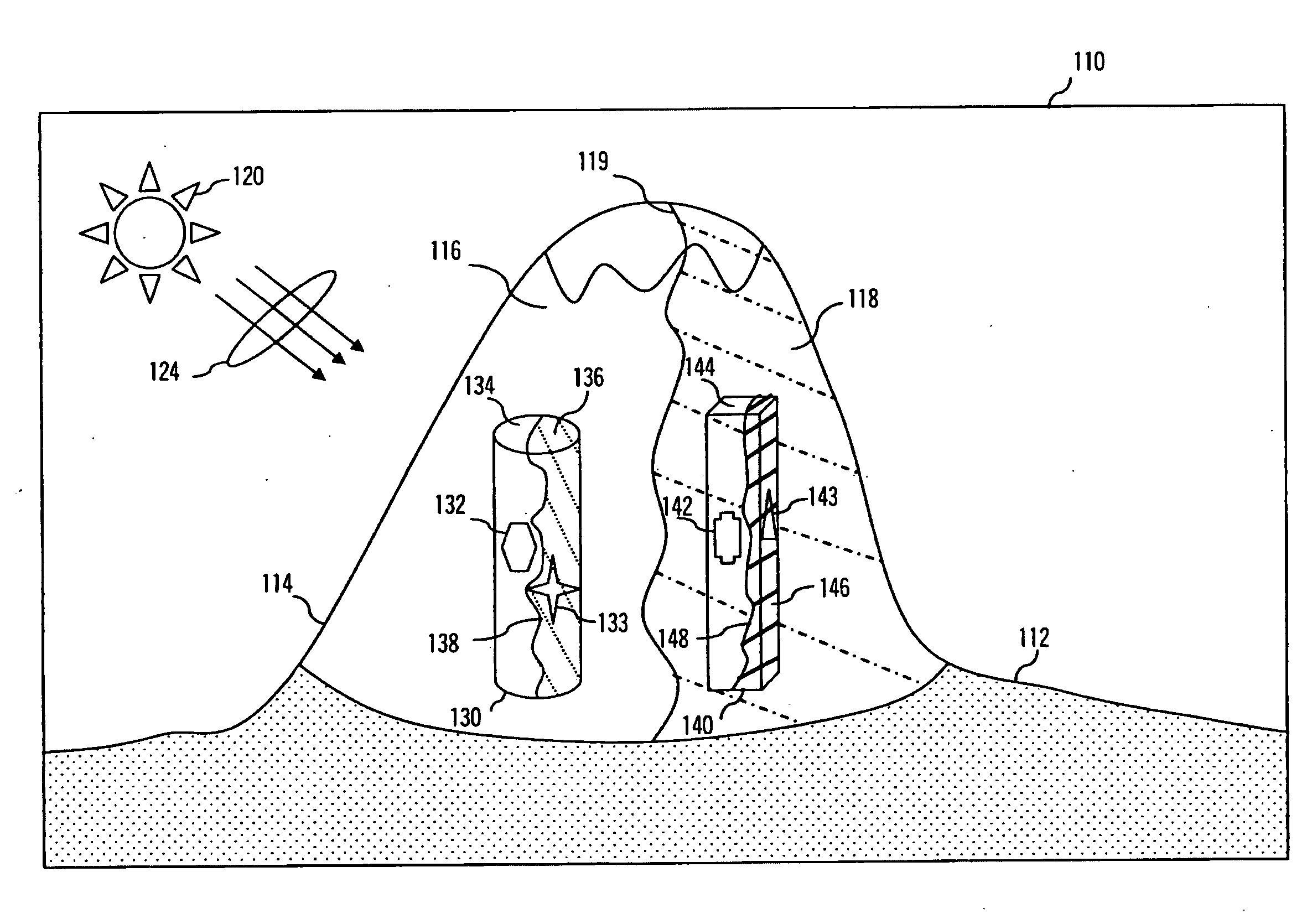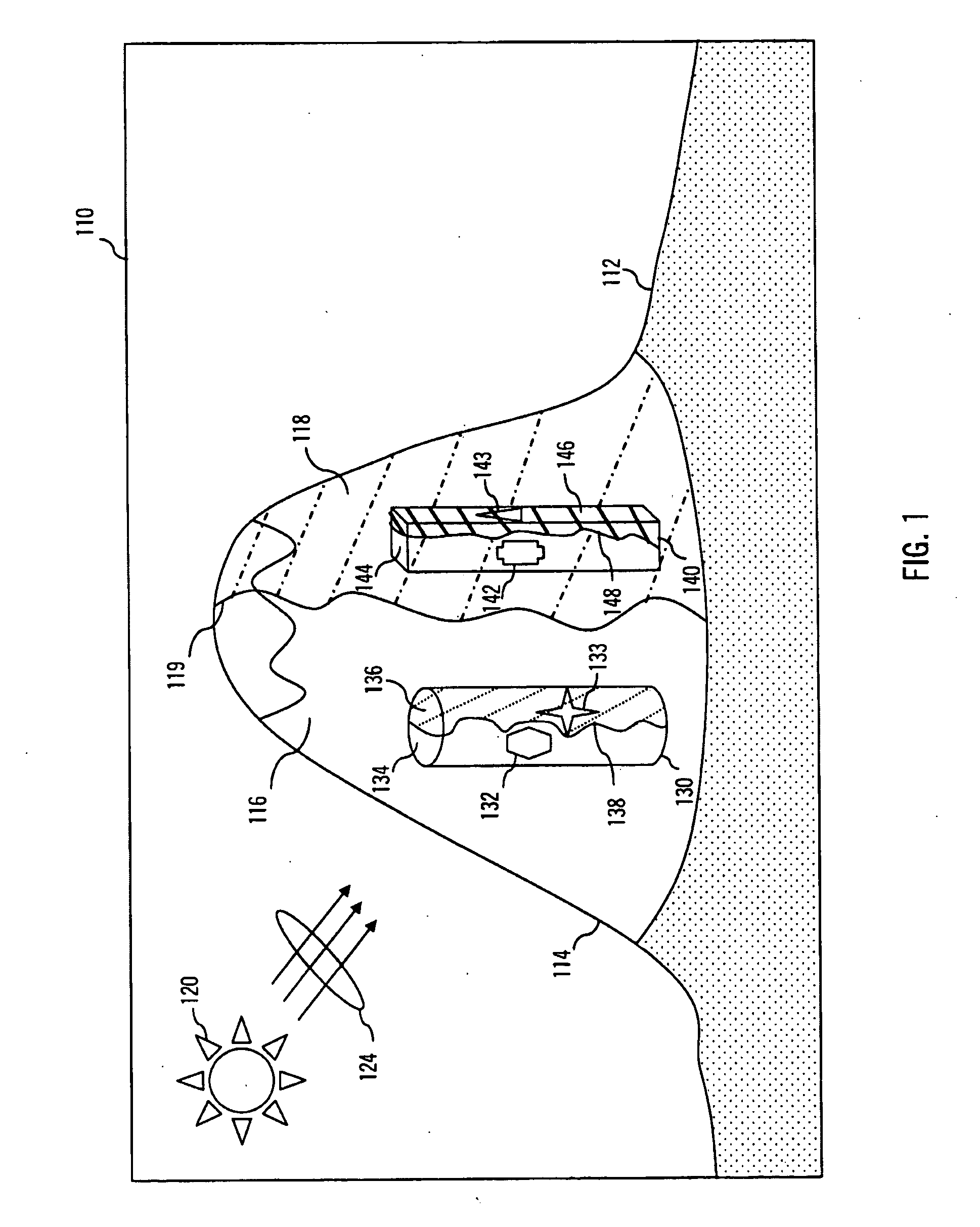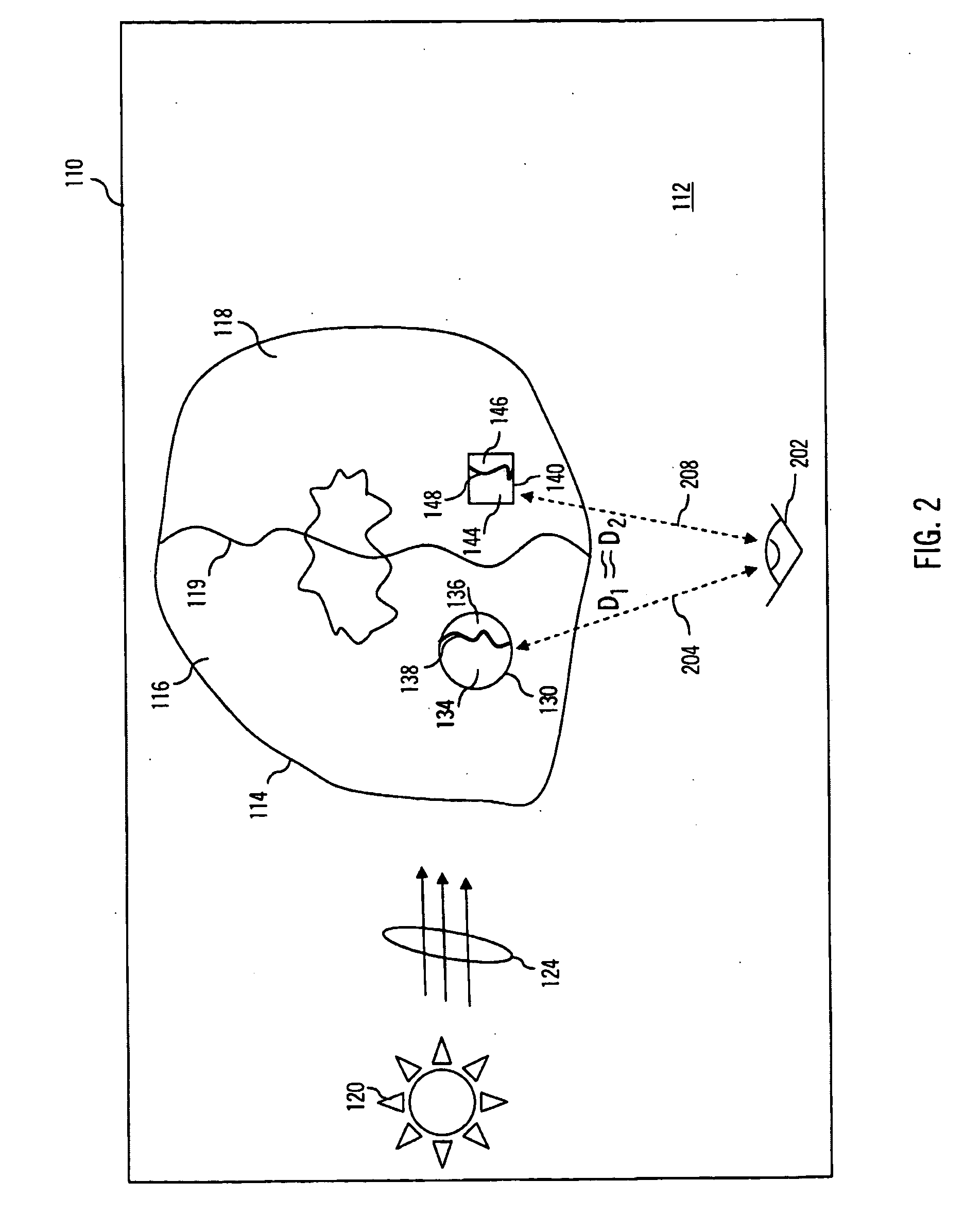Computer graphics method for creating differing fog effects in lighted and shadowed areas
a computer graphics and fog effect technology, applied in the field of computer graphics, can solve the problems that fading or applying fog effect solely on distance does not provide a true or accurate representation of what actually happens, and achieve the effect of accurately introducing depth
- Summary
- Abstract
- Description
- Claims
- Application Information
AI Technical Summary
Benefits of technology
Problems solved by technology
Method used
Image
Examples
Embodiment Construction
[0027]Briefly, embodiments of fog effect methods (or animation with such fog effects) and graphics systems for generating animation with improved or shadow-first fog effects are described in the following paragraphs. The fog effect methods and graphics systems are adapted to introduce fog such that it accounts for a pixel's location in a scene relative to one or more light sources (e.g., what is its light value) and, in some cases, such that it accounts for shadowing by objects. The fog effect methods allow an animator to set a first distance from a camera or viewpoint at which they wish a fog effect to be started for portions of the scene that are shadowed and a second distance (that is greater than the first) from the camera or viewpoint at which they wish the fog effect to be started for portions of the scene that are fully lighted (e.g., for surfaces normal to the light source). When the fog effect is then applied, details are retained in lighted or highlighted objects as compar...
PUM
 Login to View More
Login to View More Abstract
Description
Claims
Application Information
 Login to View More
Login to View More - R&D
- Intellectual Property
- Life Sciences
- Materials
- Tech Scout
- Unparalleled Data Quality
- Higher Quality Content
- 60% Fewer Hallucinations
Browse by: Latest US Patents, China's latest patents, Technical Efficacy Thesaurus, Application Domain, Technology Topic, Popular Technical Reports.
© 2025 PatSnap. All rights reserved.Legal|Privacy policy|Modern Slavery Act Transparency Statement|Sitemap|About US| Contact US: help@patsnap.com



